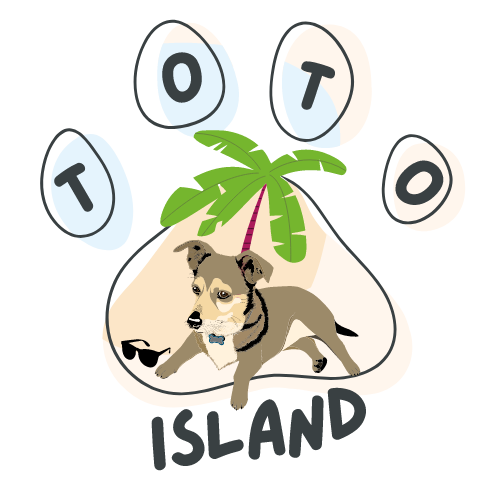Massages are often seen as a human luxury, but did you know that your dog can also benefit from a soothing massage? Just like people, dogs can experience stress, anxiety, and muscle tension, and massage therapy can provide relief for these issues. Whether it’s helping your dog relax after a long day, improving their physical well-being, or assisting with digestion, massage can be a valuable tool for pet owners. But do dogs actually enjoy being massaged, and how can you ensure you’re doing it right? In this article, we’ll explore the relationship between dogs and massages and share some of the best techniques for soothing your furry friend.
Do dogs really enjoy massages? Understanding canine reactions
Many dog owners wonder if their pets truly enjoy massages. The answer, for most dogs, is yes! Dogs tend to love the physical contact and attention that comes with a dog massage. It can calm them down, reduce anxiety, and even improve their overall mood. However, just like humans, each dog has its own preferences. Some might enjoy gentle strokes, while others prefer firmer pressure. Paying attention to your dog’s body language during a massage is crucial. If your dog seems relaxed—loose muscles, a calm expression, or even falling asleep—you’re likely on the right track. On the other hand, if they stiffen up, pull away, or seem uncomfortable, it may be time to adjust your approach.

The benefits of massaging your dog
Dog massage has many benefits that affect not only physical but also mental well-being. One of its biggest benefits is that it reduces stress and nervousness, which can be especially helpful for dogs prone to anxiety or fear of noises such as storms or fireworks. Regular massage stimulates blood circulation, which contributes to a better condition of muscles and joints, especially in older dogs. In addition, massage enhances the relationship between owner and dog, as such close, calm interactions strengthen trust.
Massage can also aid in healing, especially after injury, by stimulating blood flow and reducing inflammation. It can also be useful for dogs with digestive problems, as certain massage techniques can help improve the functioning of the digestive system.
How to massage your dog to sleep
If your dog has trouble winding down at night, a gentle massage can be a great way to help them relax and drift off to sleep. Start by creating a calm environment—turn off any loud noises, dim the lights, and make sure your dog is in a comfortable position. Begin the swedish dog massage by gently stroking your dog’s back in slow, circular motions. You can then move on to their shoulders and neck, using soft pressure to release any built-up tension. Some dogs may also enjoy having their ears or head lightly massaged, which can be especially soothing. Keep your movements slow and rhythmic, as this will help to calm your dog and signal that it’s time to rest.
As you continue the massage, pay attention to your dog’s breathing. If their breathing becomes slower and deeper, it’s a good sign that they’re relaxing and may soon fall asleep. Avoid using too much pressure or fast movements, as this can energize them rather than soothe them. The goal is to create a sense of security and relaxation that will ease your dog into a peaceful slumber.
How to massage a dog to poop: Techniques for digestive relief
Sometimes, dogs can have difficulty with digestion, leading to discomfort or constipation. In these cases, a gentle massage can help stimulate their digestive system and encourage bowel movements. Start by ensuring your dog is relaxed, then gently rub their abdomen in a clockwise motion. This mimics the natural direction of digestion and can help move things along. Be sure to use light pressure and watch for any signs of discomfort—if your dog shows signs of pain, stop immediately.
Another technique is to gently massage the area near the base of the tail, where many nerves that influence bowel movements are located. This can help stimulate the muscles needed for pooping. Along with abdominal massages, gently lifting and massaging your dog’s hind legs can also encourage movement in their digestive system. Be patient, and always ensure your dog is comfortable throughout the process.
When to avoid dog massages?
While massages can be beneficial for most dogs, there are certain situations when it’s best to avoid giving your dog a massage. If your dog has a recent injury, such as a sprain or fracture, it’s important to consult a veterinarian before attempting any massage. Massaging an injured area could potentially worsen the damage or cause your dog pain. Similarly, if your dog has any open wounds, skin infections, or areas of inflammation, avoid massaging those areas to prevent further irritation.
Additionally, if your dog seems overly anxious, aggressive, or uncomfortable with physical contact, it’s best to approach massage cautiously. Some dogs may not enjoy being touched in certain areas or may need time to get used to the sensation of a massage. Always pay attention to your dog’s body language, and if they show signs of discomfort, like growling, pulling away, or tensing up, stop the massage immediately.
Finding professional dog massagers near you
If you’re not comfortable performing a massage on your dog or want to explore more advanced techniques, seeking the help of a professional dog masseur might be a great option. Many cities have pet massage therapists who specialize in canine massage therapy, providing services that range from relaxation to therapeutic treatments for specific conditions like arthritis or post-surgery recovery. You can start by searching online for “dog massage near me” or “dog massage in Saint Augustine” os asking your veterinarian for recommendations.
When selecting a professional, it’s important to ensure they are trained and certified in animal massage therapy. You can also check reviews and testimonials from other pet owners to ensure the masseur has a good reputation. A qualified dog massage therapist will understand how to handle different breeds, ages, and health conditions, ensuring your dog gets the most benefit from their sessions.
Massaging your dog can be a wonderful way to bond with your pet while providing them with physical and emotional benefits. From reducing stress to improving digestion, massages can be tailored to meet your dog’s specific needs. Understanding how to read your dog’s body language and using the right techniques—whether to help them sleep or relieve discomfort—can make all the difference. While at-home massages are effective, professional dog massage therapists can offer advanced treatments for more specialized care. By incorporating massage into your dog’s routine, you’re giving them a gift of relaxation, comfort, and improved well-being.
If you choose me as your dog masseur, I will assess your dog’s condition every time, and if I find that your pet needs rest instead, I will communicate that. For dog massage treatments, feel free to contact me in the Saint Augustine area! Give me a call, and let’s schedule the first appointment! (904) 377 6291

